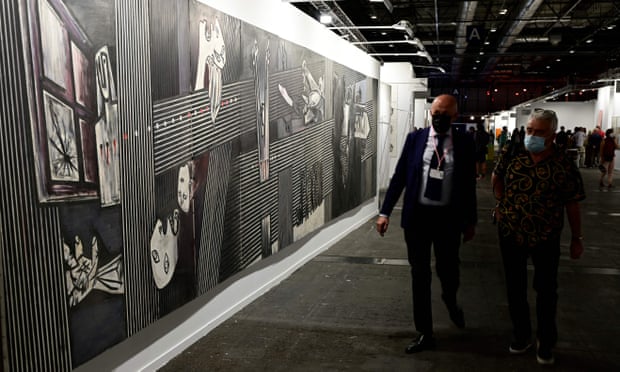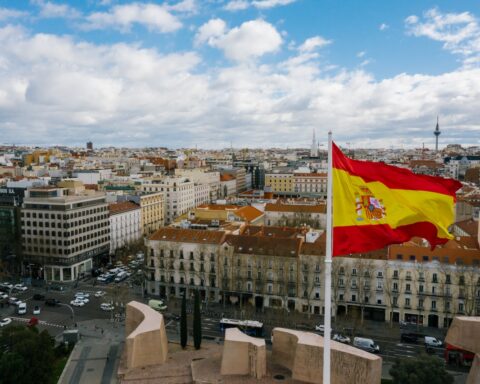The grief-snapped mother is still there, cradling her dead child 84 years on, as is the fallen soldier with his stigmata and the horse with its silent screams.
However, the Guernica now on its way to a museum in the Basque country is not Pablo Picasso’s monochrome howl of anti-fascist fury but a retelling of the work intended to help bring the original to the market town whose agonies beneath waves of German and Italian bombers inspired its creation – and to denounce the subsequent horrors of the Franco dictatorship.
The Basque artist Agustín Ibarrola painted Guernica Gernikara in 1977 as part of a campaign to get Picasso’s masterpiece, perhaps the most famous painting of the 20th century, to Guernica after its long exile at the Museum of Modern Art in New York.
But when it finally came home in the hold of an Iberia 747 in 1981, Guernica ended up in Madrid, where it remains to this day.
Ibarrola’s work had endured a less public and peripatetic fate until last week, when it was taken from the artist’s studio in the Basque country and exhibited at Madrid’s annual international contemporary art fair (Arco).
The reappearance of “forgotten Guernica” and its 10 oil-painted, canvas panels was widely reported in the Spanish media and it is now being reappraised and celebrated in its own right.
Bilbao’s Museum of Fine Arts – which last exhibited the painting 40 years ago – has bought it for €300,000 (£260,000) thanks to contributions from the Basque government, the provincial council of Bizkaia and Bilbao’s city hall.
“This new acquisition restores to the public one of the most important works of Basque 20th-century artistic heritage,” the museum said in a statement. “Not only is the painting linked to the museum’s own history, it will also significantly enrich Agustín Ibarrola’s presence in the collection.”
The museum noted that Guernica Gernikara was considerably more than just a tribute, adding: “In its panels, you see some of the most iconic figurative motifs from Picasso’s work, but also elements from Ibarrola’s own creative universe, such as the geometric grids that symbolise his condemnation of the climate of oppression of the [Franco] dictatorship and his calls for freedom.”
That oppression is most evident in the dark and menacing police officers who crowd the painting’s final panels, partially obscuring the word Guernica.
The gallery owner, José de la Mano, who stumbled across photographs of the painting and eventually managed to bring it to Arco, said Guernica Gernikara told the story of the end of the dictatorship and of Spain’s transition to democracy after the death of Franco. It also reflected the imprisonment and torture that Ibarrola suffered under the regime.
“Having a print of Guernica in the 70s and 80s was a real statement of intent,” he told the online newspaper Público. “[Ibarrola’s] interpretation 40 years on is, in fact, an interpretation of the transition. It’s an image of social struggles, of prison bars and of the police: it interprets the end of the dictatorship. And don’t forget that [Ibarrola] spent five years in prison.”
De la Mano added that while the painting could have gone for far more than €300,000, the family of Ibarrola – who is now almost 91 – was delighted to see it return to public display at the Bilbao museum after so many years.
“Going back to Bilbao closes the circle,” he said. “It was shown there in 1977 in a space called the Grey Room. It’s very important for the family that this will be its final destination.”





